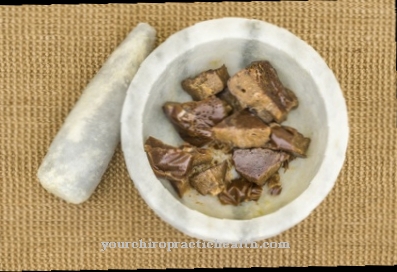The Soapwort is a plant that was used as a soap substitute as early as the Middle Ages. Hence the name. It is also popularly known as soapwort or laundry herb. At the same time it is a wild medicinal plant that relieves coughs.
Occurrence and cultivation of soap herbs

White to pink flowers appear from June to October. The stems are slightly hairy and have a reddish color, which explains the sometimes used term red soap root. In the soil the herb forms ramifications as thick as a finger. The preferred locations for the soap herb are sand, stone and gravel soils. In the wild it grows on roadsides, railway embankments, sandy bank areas, bushes, on gravel banks and debris areas.
The herb can also be planted in the garden, provided it has loose and nutrient-rich soil. Due to the saponins contained in the plant, the herb is slightly poisonous and dangerous for certain animals such as cats and rodents in large quantities.
Effect & application
It is not possible to determine exactly when the soap herb was first used as a detergent. What is certain is that it was used in the earliest times. It can be proven that in the Middle Ages it was mainly monks and poor people who could not afford soap who resorted to it. They used the roots and leaves that contain the most saponins. This is the main ingredient in the herb that causes foam to form in the water. In the Middle Ages, people not only cleaned their clothes with the ground pieces of root and water, but also dishes and sheep's wool. Nowadays the soap herb is partly in use again as an organic soap substitute.
There are stain sprays and heavy-duty detergents. These cleaning products are particularly gentle on the fabric and are well suited for lace, silk or wool. However, textiles with heavy soiling need pretreatment, as the cleaning power does not match that of soap or other chemical substances. The washing effect is also used in hair care: a shampoo can be made from the pieces of root. Due to its foam-forming properties, cosmetics use soapwort in products for skin cleansing.
However, the main focus of the plant's use is in the medical and naturopathic area. Many medicines to loosen phlegm and coughs contain the herb, which is why it is popularly known as Cough root is known. The dried roots and rhizomes can be found in ready-made preparations or can be purchased in herb stores. Naturopathy uses the roots in the form of tea or decoctions. Soapwort can also be used to treat skin diseases.
In Arabic medicine it was even used to fight leprosy and skin ulcers. Its use as food is less common. The flowers are edible and go well with cabbage salads. They are also considered a home remedy for clothes moths. The herb is used as a whipping agent in the traditional halva dessert. As an ornamental plant, the plant fits in near-natural gardens and is a good source of nectar for butterflies. However, the herb is very rarely found in plant centers, only the seeds can be easily purchased on the Internet.
Importance for health, treatment & prevention
Conventional medicine uses the ingredients of soapweed to treat diseases of the upper respiratory tract, i.e. coughs, sore throats or bronchitis. The contained saponins promote the expectoration of bronchial secretions and thus facilitate expectoration, at the same time they alleviate sore throats and hoarseness. In the form of drops or tea, the herb is used as an expectorant.
It is advisable to make the tea cold, let it stand for a few hours, then boil and finally pour it through a sieve. This is how it can best develop its effect. Clinical studies continued to investigate the benefits of the herb's saporin in fighting tumors. Naturopathy attributes other effects to soap herb: It is diuretic and therefore suitable for the treatment of rheumatic diseases. It has a laxative effect, purifies the blood, stimulates digestion and promotes metabolism.
In addition to being used for colds, homeopathy also uses it for headaches. In the case of viral diseases, it is also a natural way to combat them. The root pieces and leaves are good for foot baths or pads against athlete's foot. The herb can also be useful for skin conditions. Decoctions from the root pieces can help relieve itching, acne, and eczema. A home remedy for beautiful skin is bathing with soapwort.
It is important, however, that the water mixed with soapwort does not get into the eyes. Since the herb is gentle on the skin and kind to the skin, it is suitable for sensitive skin and neurodermatitis. When used internally, it should be noted that it is poisonous in high doses. It can cause vomiting and irritate the digestive organs and urinary system. It is advisable to follow the dosage instructions and discuss the use with a doctor. The maximum recommended amount for tea use is two cups per day.








.jpg)



















